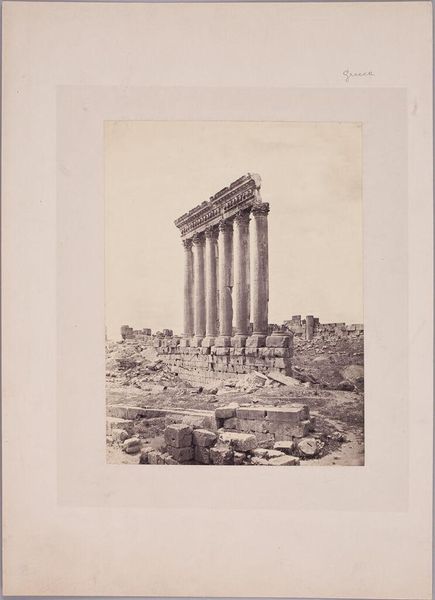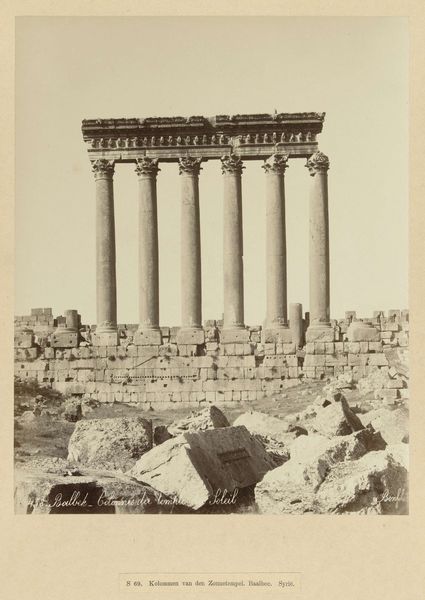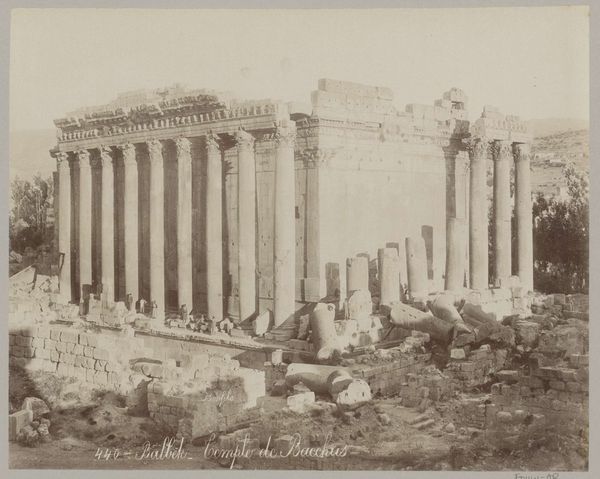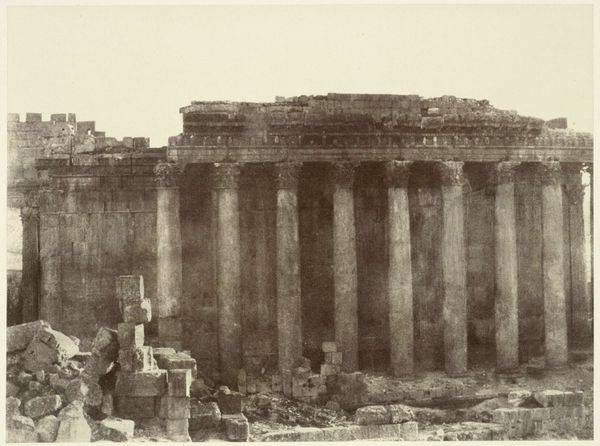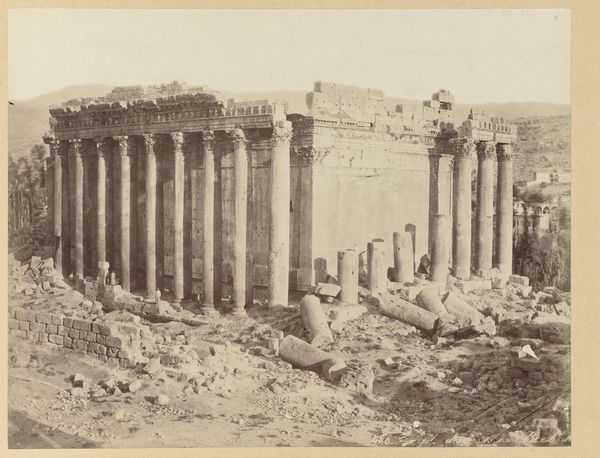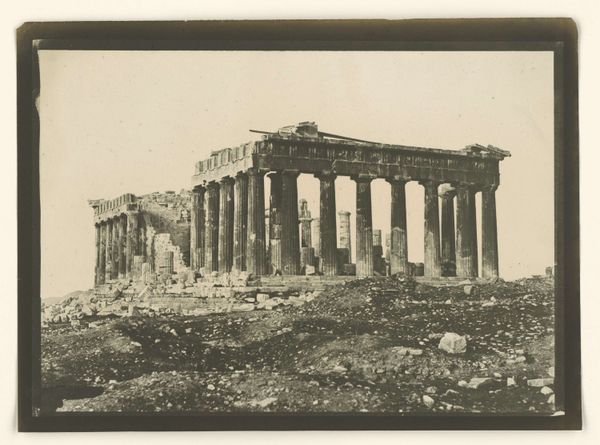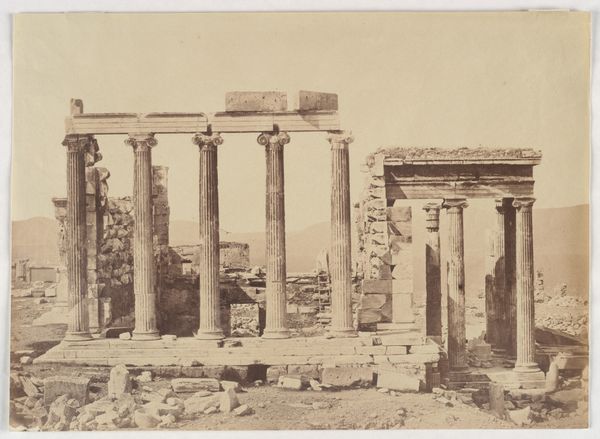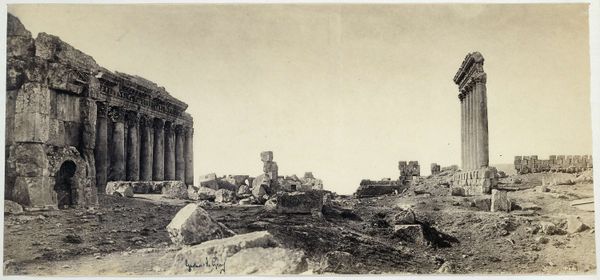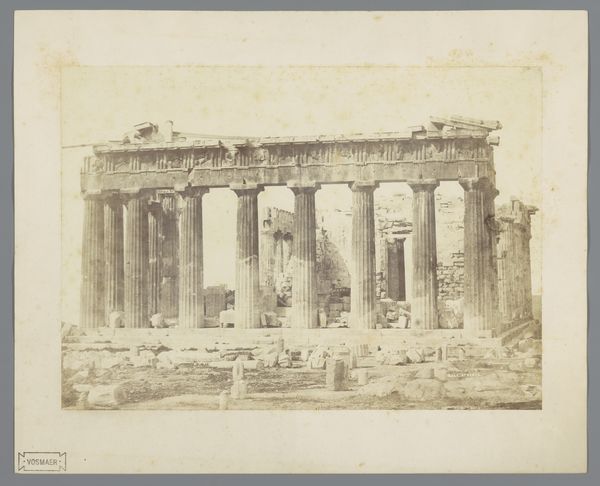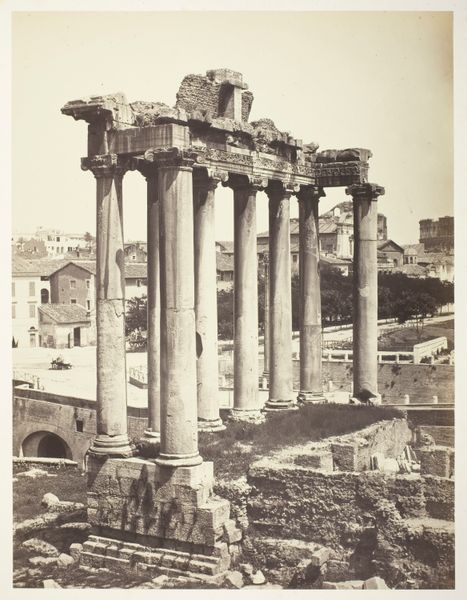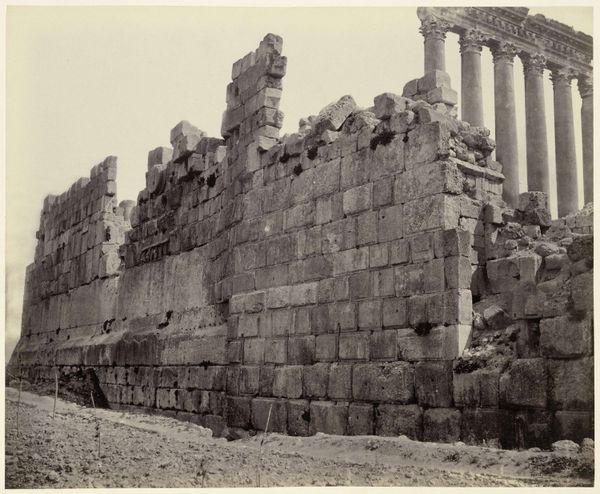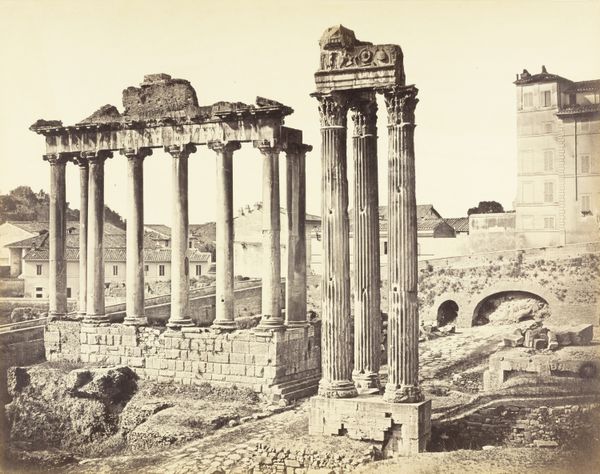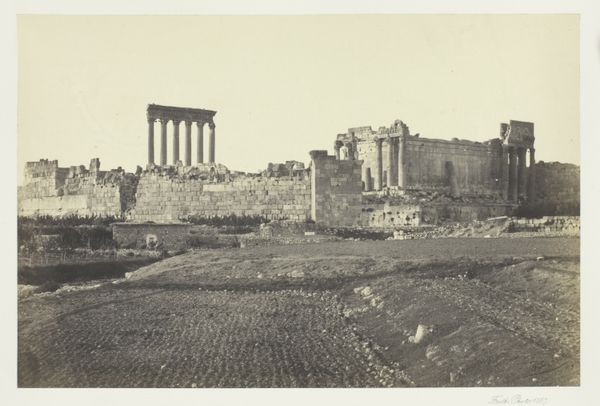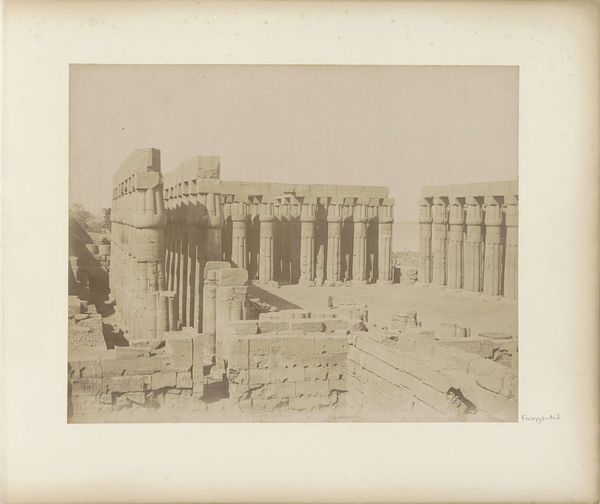
silver, print, photography, site-specific, gelatin-silver-print
#
print photography
#
16_19th-century
#
silver
# print
#
war
#
landscape
#
photography
#
egypt
#
ancient-mediterranean
#
site-specific
#
gelatin-silver-print
#
photo layout
#
men
#
history-painting
Dimensions: 22.6 × 15.6 cm (image/paper); 42.6 × 19.3 cm (album page)
Copyright: Public Domain
Editor: We’re looking at Francis Frith’s "The Great Pillars at Baalbec," a silver print from 1857. It’s quite striking – a stark, almost brutal depiction of ancient ruins. I’m really drawn to the contrast between the smooth pillars and the jagged, chaotic rubble. What do you see in this piece? Curator: Precisely. The tension between order and disorder is paramount. Note how Frith meticulously captures the fluting on the columns, each line distinct despite the overall state of decay. This deliberate contrast speaks to the enduring power of form against the ravages of time. Furthermore, examine the tonal range—the gradations of light and shadow sculpt the forms, lending them a weightiness, an undeniable presence. Editor: I noticed that the bottom third of the image is basically all rubble – seemingly unstructured! Is it still an integral part of the artwork if it looks so unstructured? Curator: Indeed. While seemingly unstructured, it functions as a foundational element. The chaotic base emphasizes the verticality and, arguably, the fragility of the remaining pillars. The ruins are not merely a backdrop; they participate actively in the overall composition. Without the base of rocks, the pillars would lose much of their grandeur because that relationship constitutes a visual rhyme between top and bottom, wholeness and fragmentation, which ultimately brings attention to form. Editor: That's fascinating, I never would've thought of it that way. It’s less about the ruin as a place, and more about its components! Curator: Precisely. The essence lies not just in the depiction of a historical site, but in how Frith uses light, texture, and composition to reveal the intrinsic qualities of form itself. Editor: So I guess it really helps to understand how every bit and piece contributes to the artwork's goal as a whole. Thank you.
Comments
No comments
Be the first to comment and join the conversation on the ultimate creative platform.
